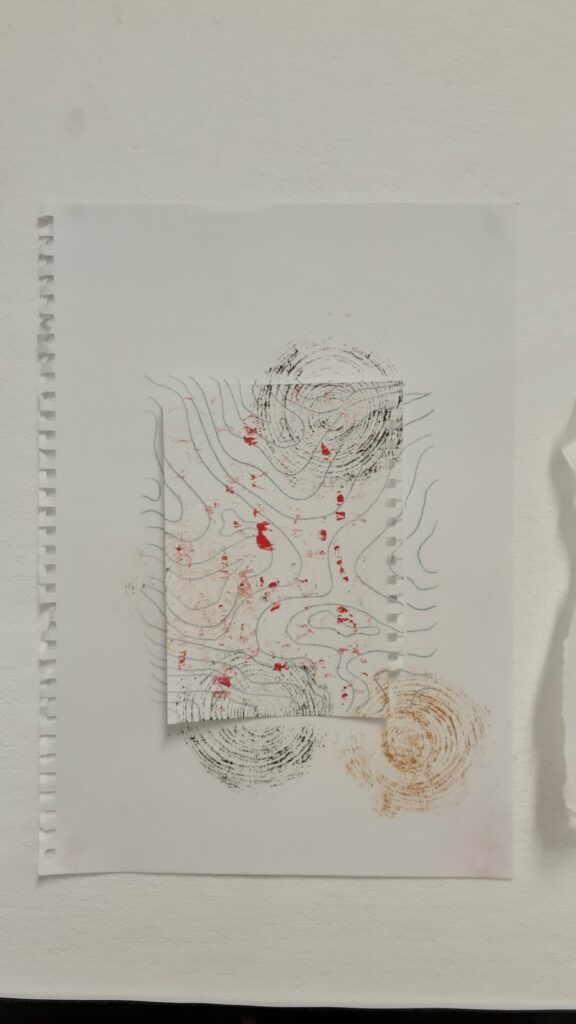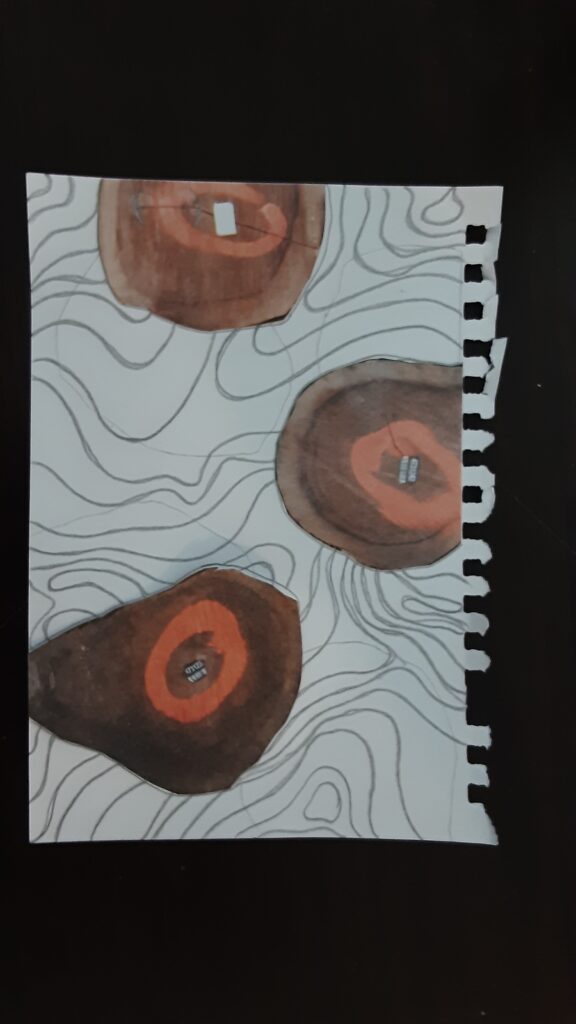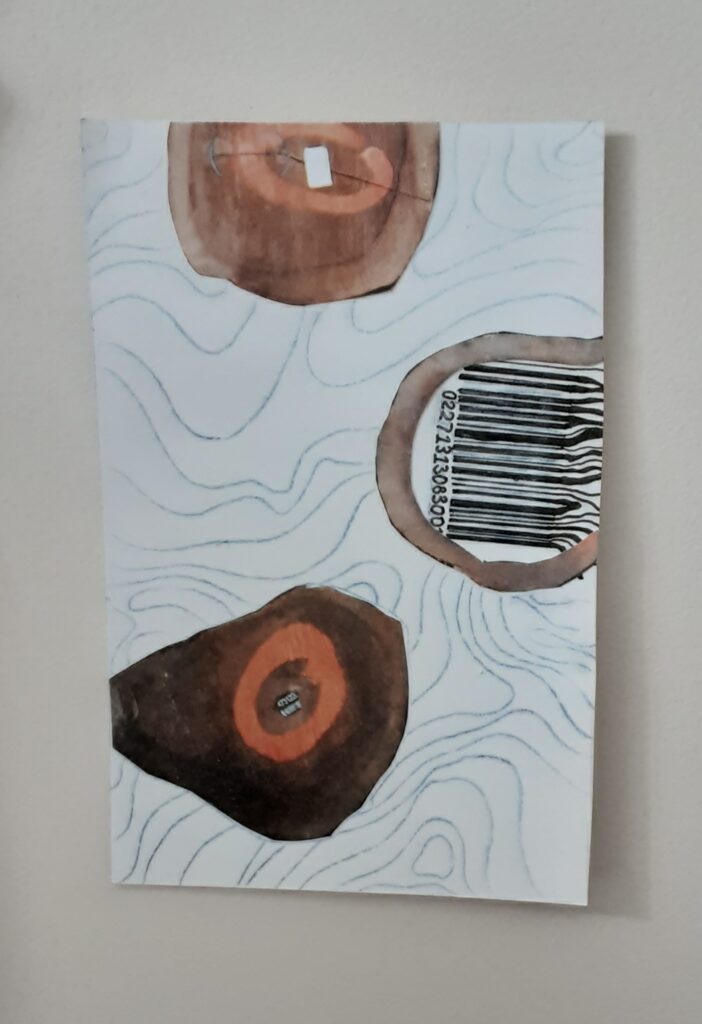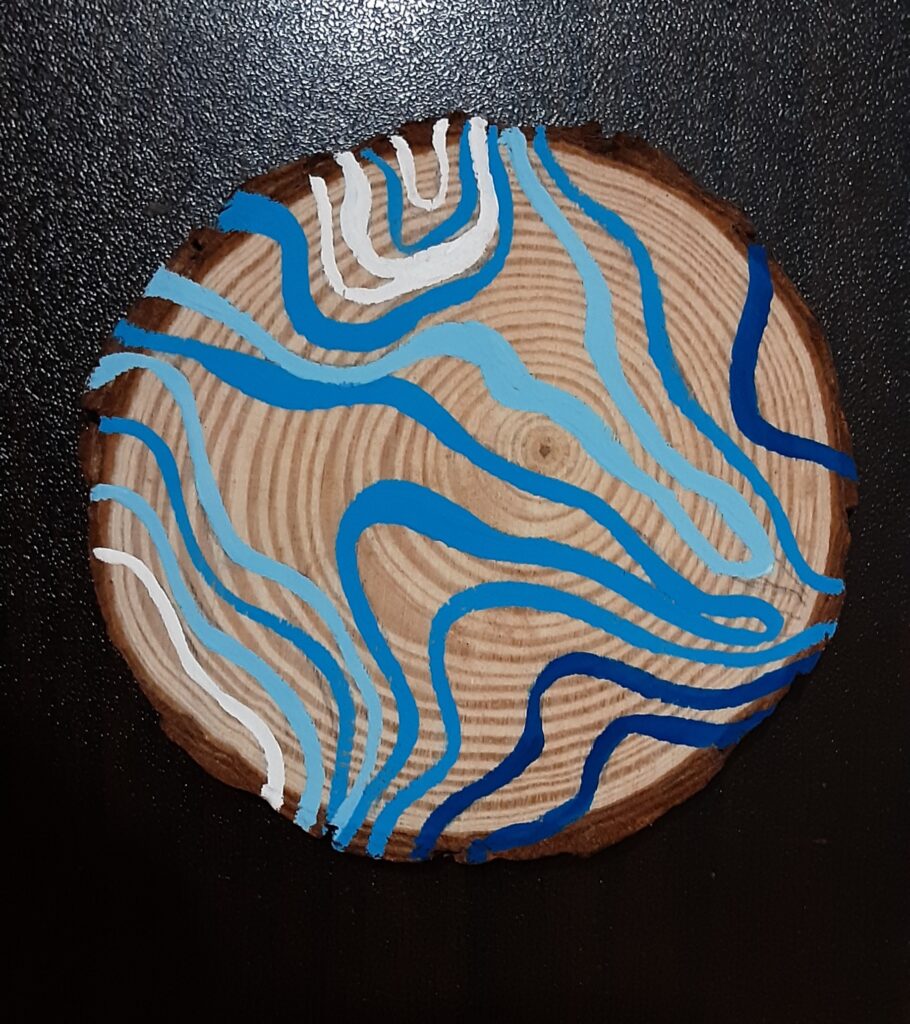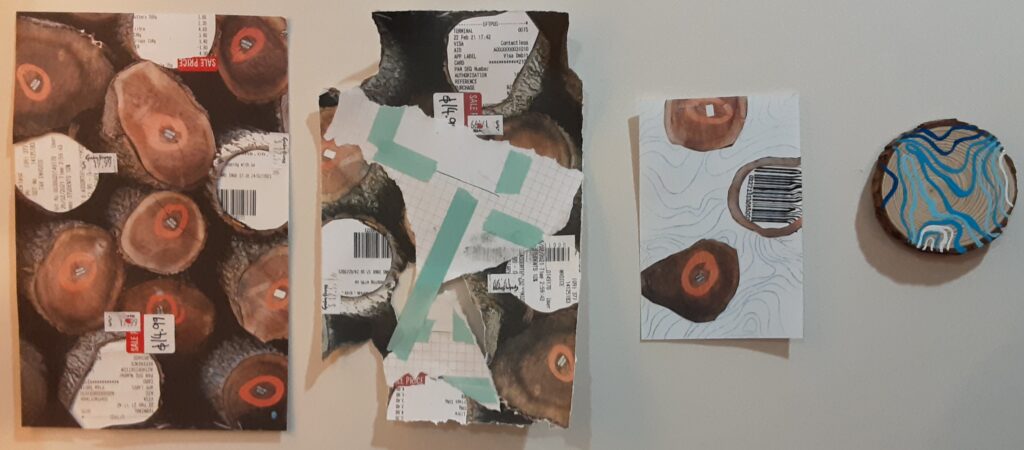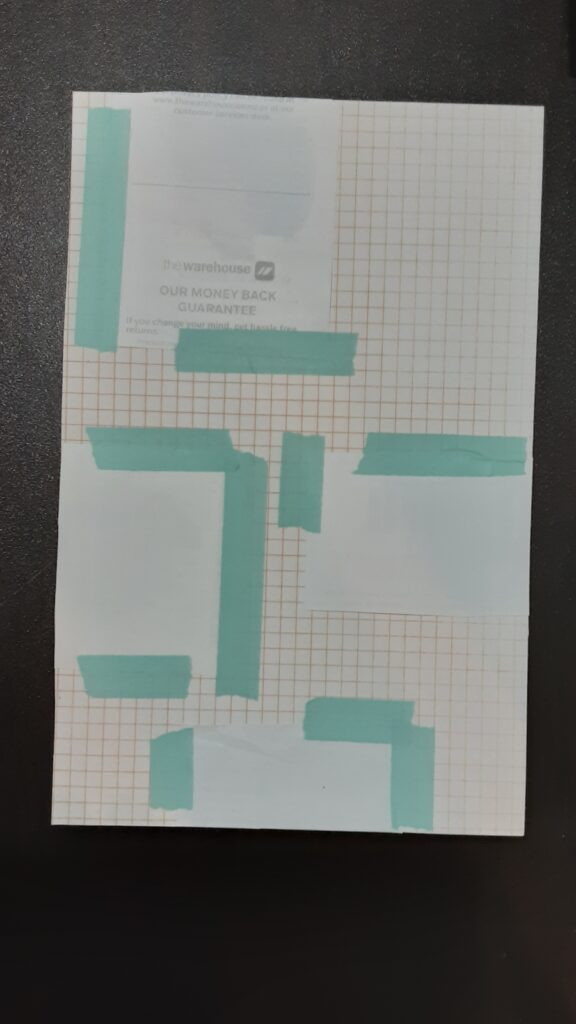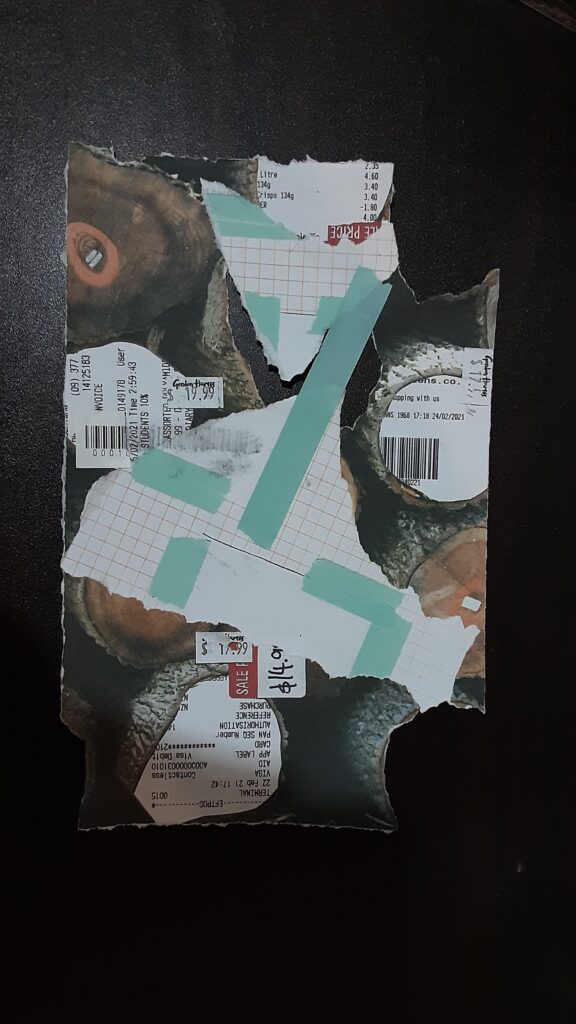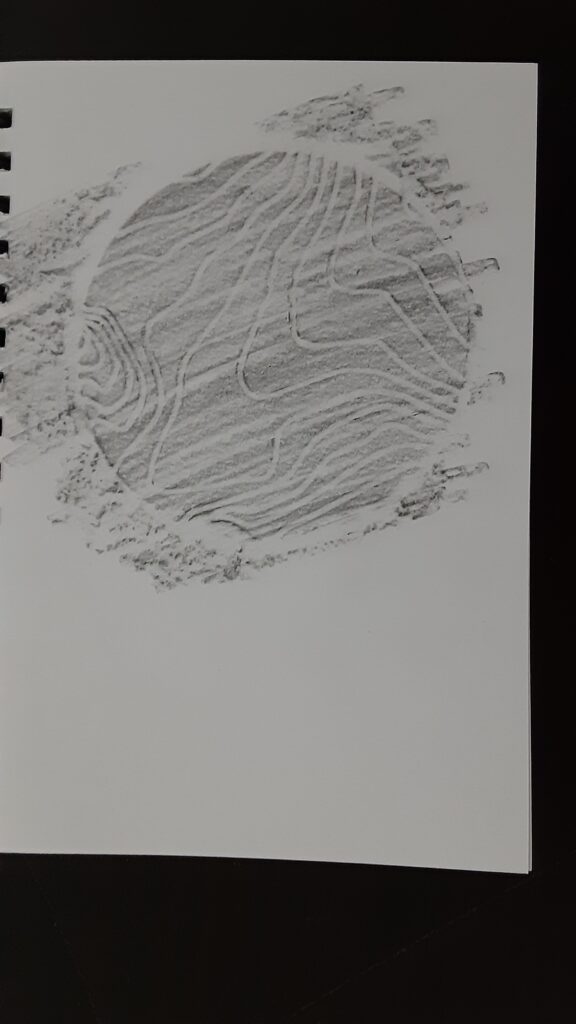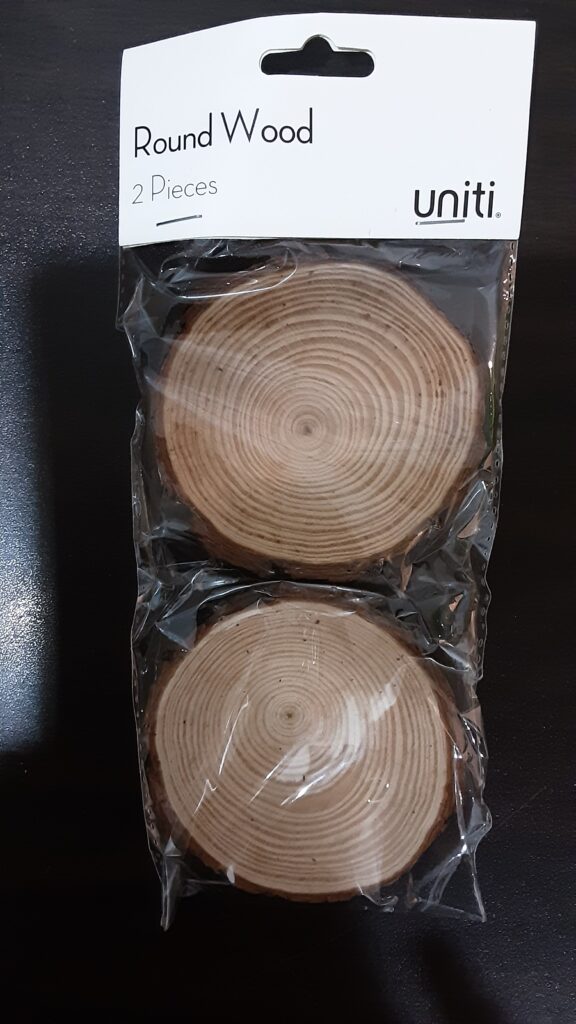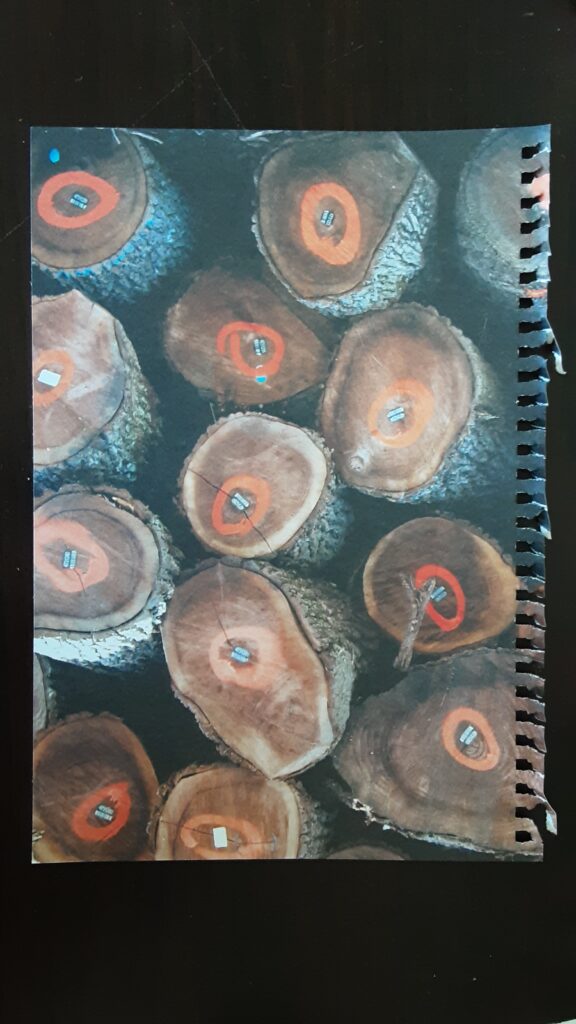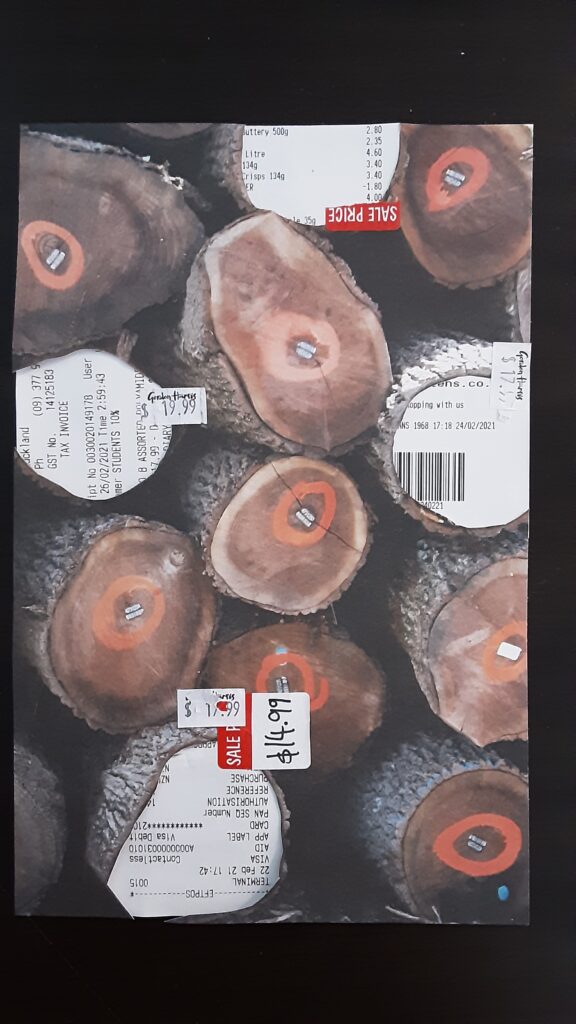In the print lab with Straun I found myself making some interesting happy accidents as I learnt the art of mono printing. When cleaning the plates I found the turps would mix with the ink to create a very watered down inky solution which would cling to the back of the slate I was working on and then transfer to the tissue paper I laid down to protect the press. It meant two prints would be created at once, one purposeful and one accidental. I decided to embrace these accidents and purposefully print both sides of the slate from then on.
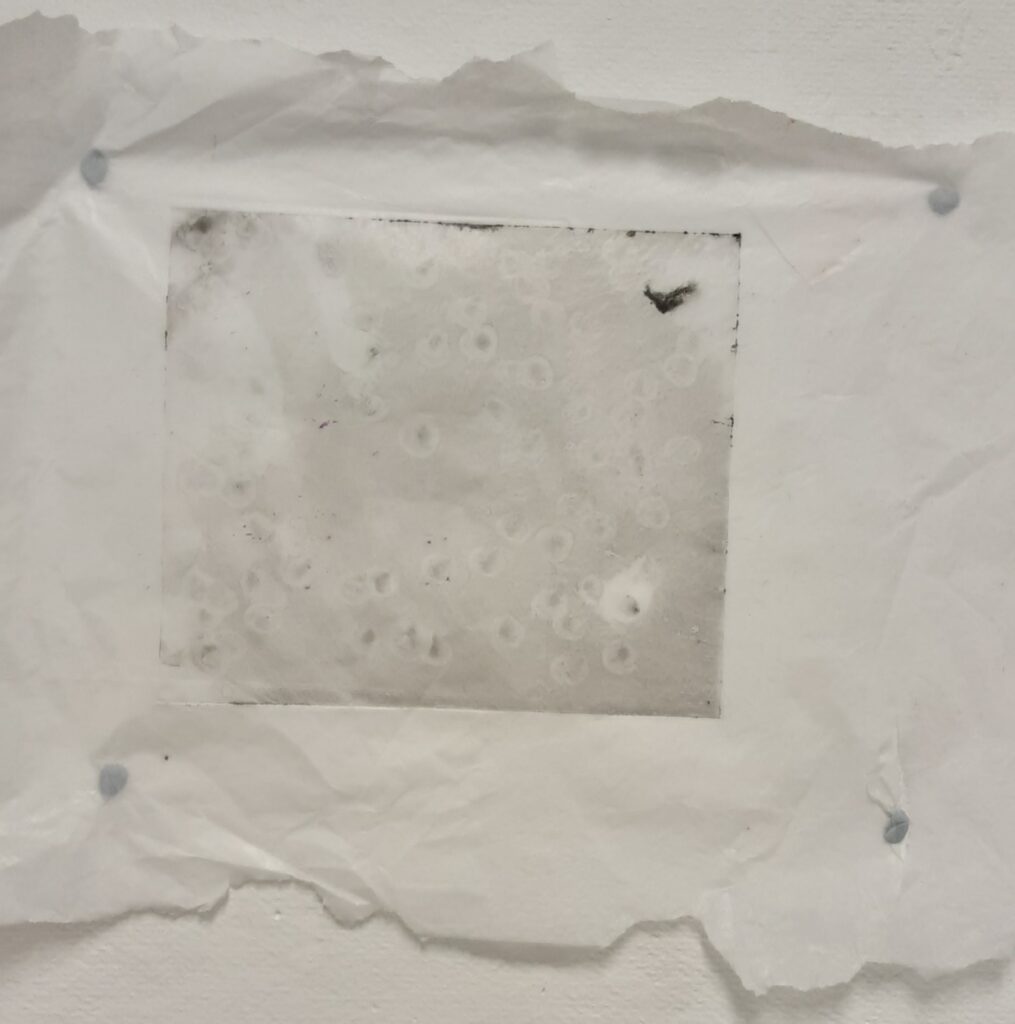
From there, I was inspired by the previous work I’d made (see ‘Stamping’ post) where the wavy squiggles reminded me of altitude lines on a map. I found a map in studio of Mt Ruapehu and the surrounding Tongariro Park area, with hundreds of orange altitude lines marking out the changes in the land. I took another print on calico and traced these altitude lines onto it using carbon paper.
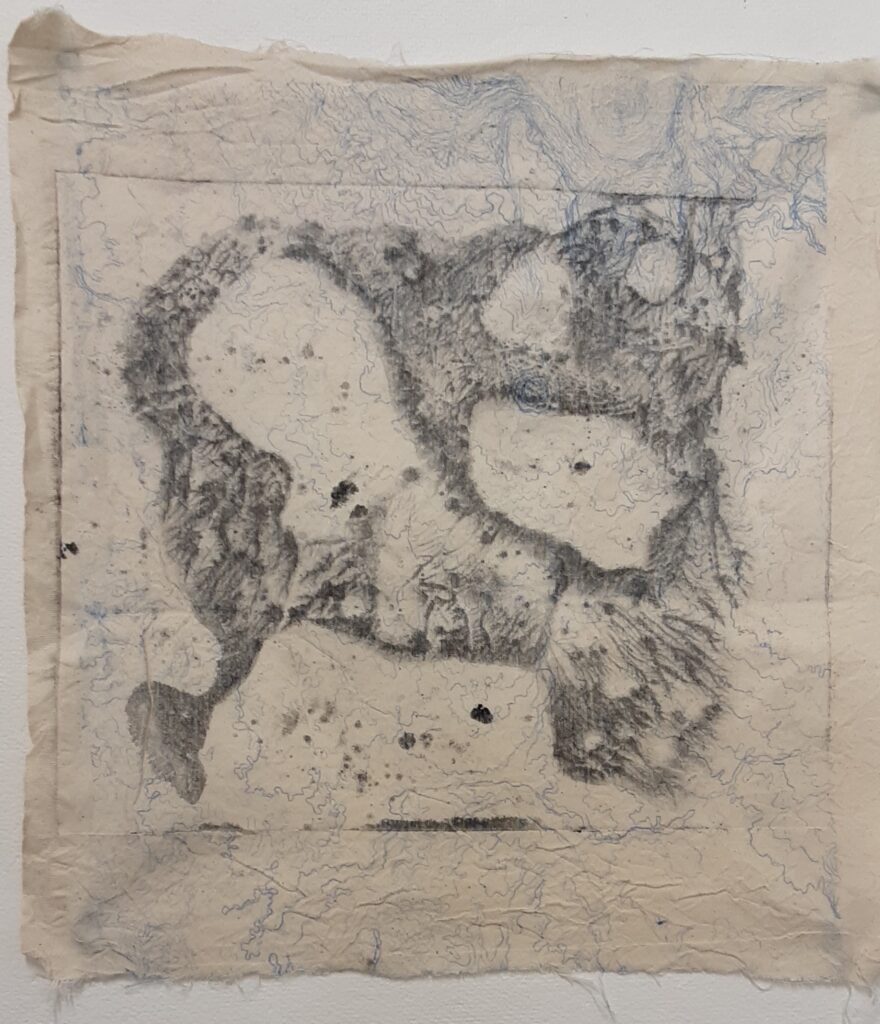
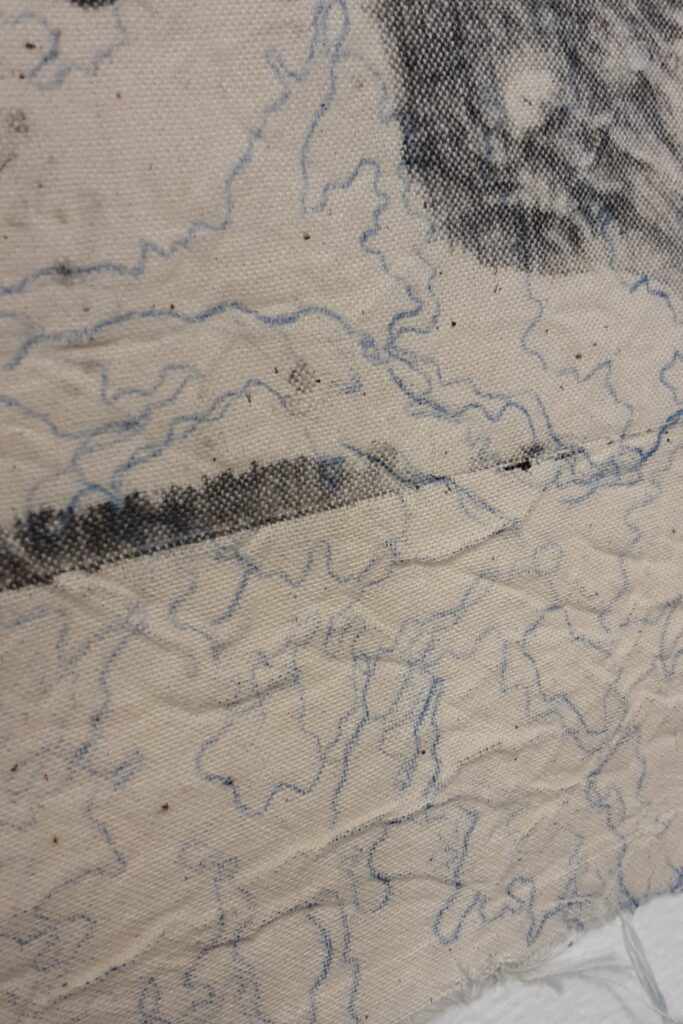
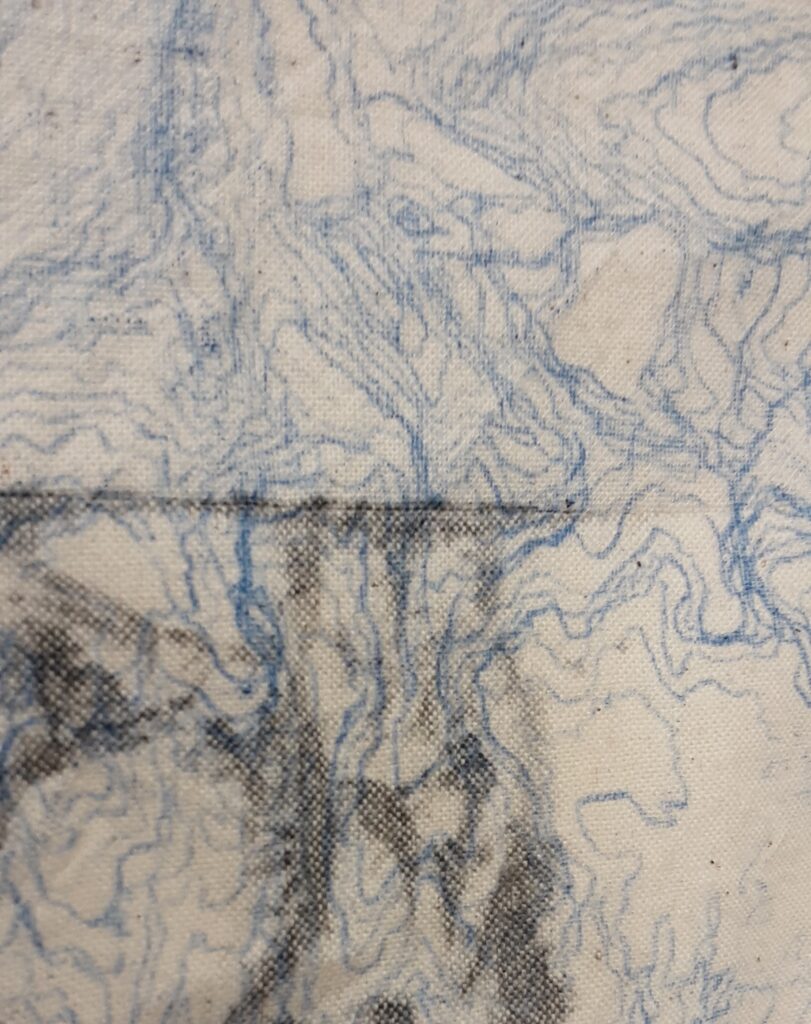
This work took me hours to complete with the tedious tracing of hundreds of lines however the final result really impressed me and many of my classmates. I like the complexity of the work, especially one work containing multiple complex patterns. I hope to continue this in my next pieces but will need to devise a faster was of creating complicated works so as not to slow down my pace of making.

